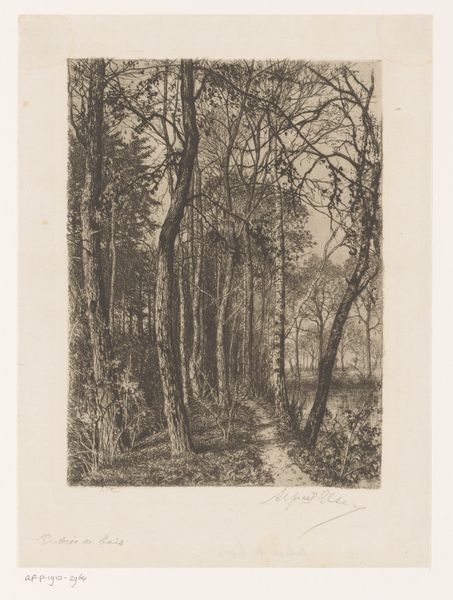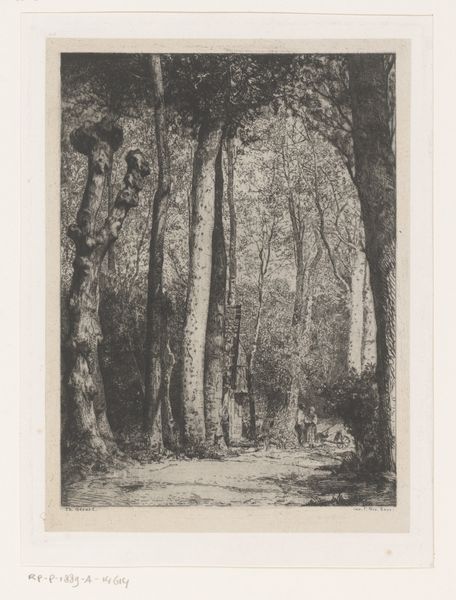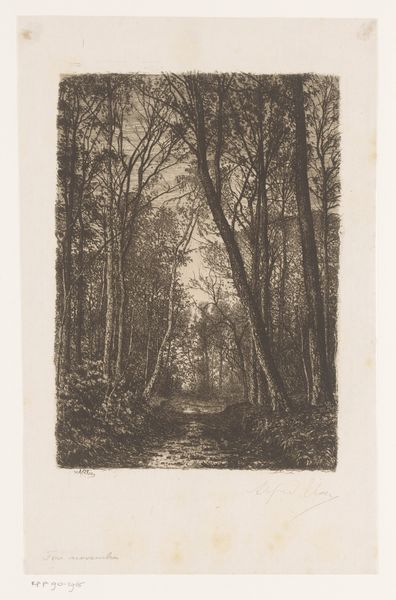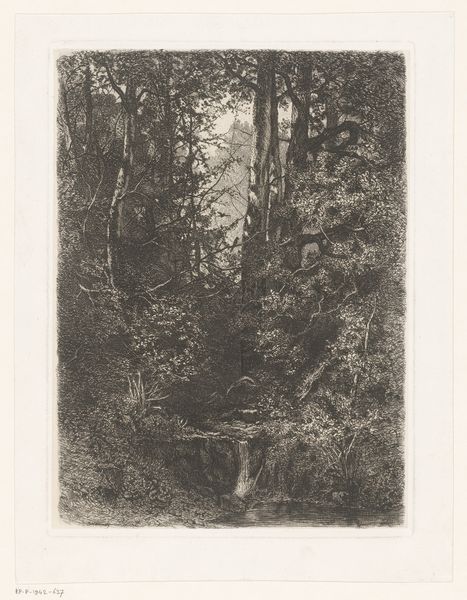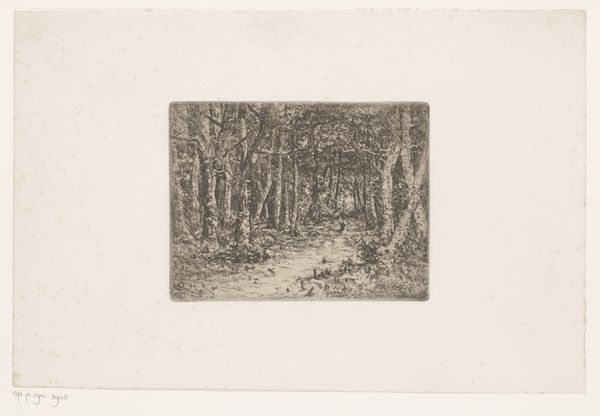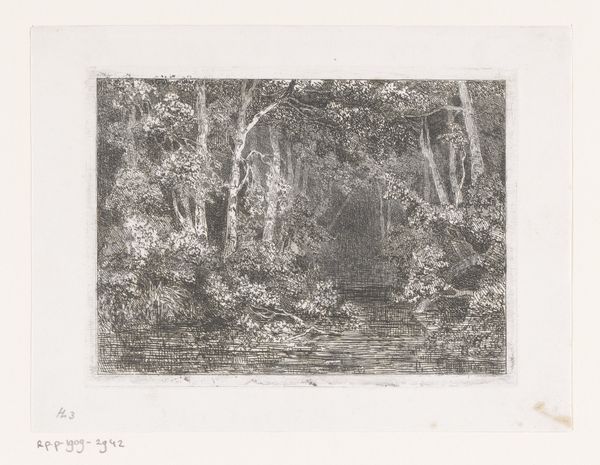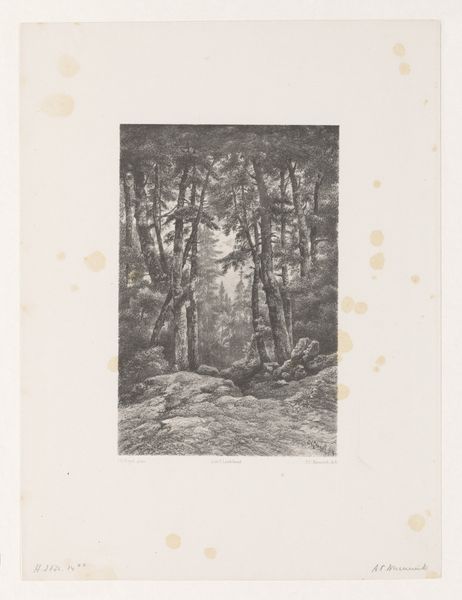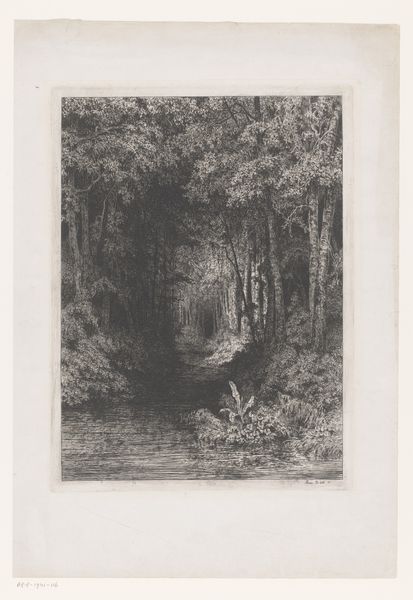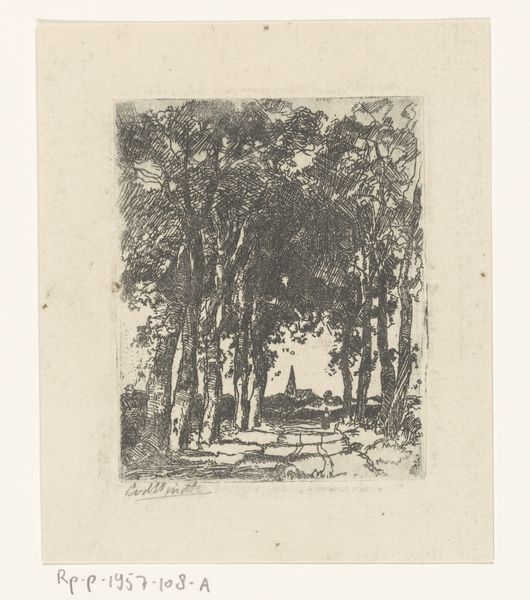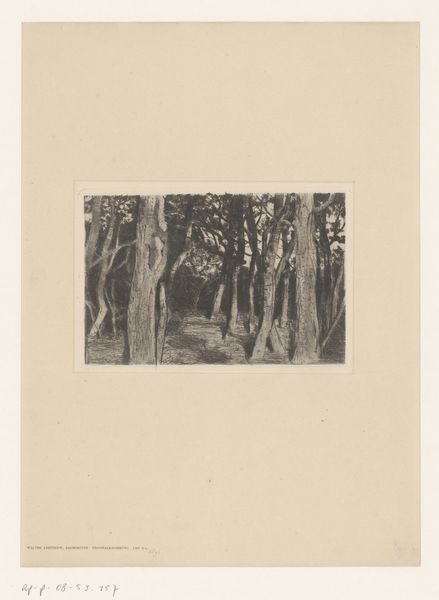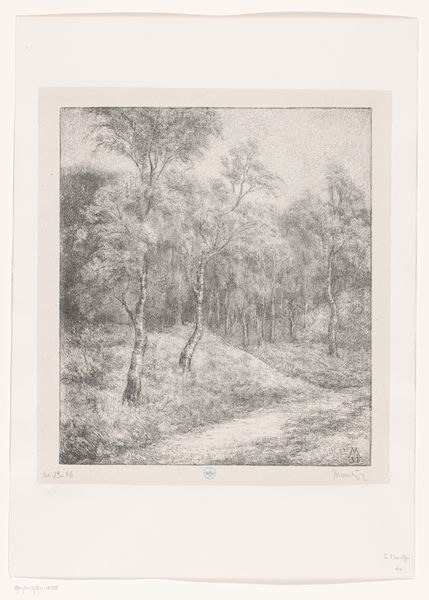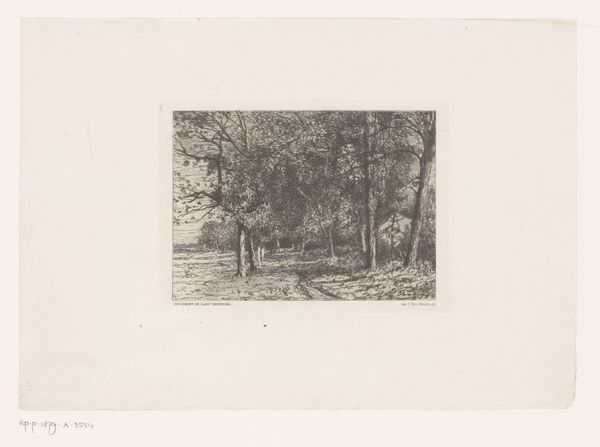
Dimensions: height 240 mm, width 160 mm
Copyright: Rijks Museum: Open Domain
Editor: We're looking at "Bosgezicht met bospad," a landscape drawing and etching, made sometime between 1860 and 1910 by Alfred Elsen. I find its intimate scale quite captivating. What do you see in this piece, especially regarding its historical context? Curator: This work presents a seemingly straightforward forest scene, yet it invites us to consider the role of nature within a rapidly industrializing society. The late 19th century witnessed increasing urbanization and exploitation of natural resources. How might this image function as both an escape and a commentary? Editor: Escape, yes, I see that in the quiet, shaded path, but commentary? It feels so…peaceful. Curator: Perhaps that very peacefulness is the commentary. By idealizing nature, is the artist implicitly critiquing the social and environmental costs of progress? Consider the limited access to nature for urban workers during this period, and the rise of Romanticism, which often idealized the natural world in response to industrial encroachment. Editor: So, it’s a political statement through pastoral imagery? That's fascinating. Were there specific social movements connected to this kind of art? Curator: Absolutely. Think about the rise of early conservation movements and artists who advocated for environmental preservation. Even depictions of leisure in nature were subtly charged, reminding viewers of what was at stake amidst modernization. Where do you see this idyllic view reflected today? Editor: It’s like those Instagram posts showing untouched wilderness… they’re beautiful, but they can mask the issues faced by indigenous communities. I guess even pretty pictures can carry complex meanings. Curator: Exactly. And questioning those meanings is essential. It helps us appreciate the artistry and its intricate relationship to society and power structures. Editor: I will never look at a landscape the same way. Thanks for helping me see all of this. Curator: And thank you for your astute observations. The dialogue between art and activism is one that needs continuous nurturing.
Comments
No comments
Be the first to comment and join the conversation on the ultimate creative platform.

